Symptoms of rectal ca. Rectal Cancer: Symptoms, Causes, and Risk Factors You Need to Know
What are the common symptoms of rectal cancer. How is rectal cancer diagnosed. What factors increase the risk of developing rectal cancer. What lifestyle changes can help prevent rectal cancer. How does rectal cancer spread to other parts of the body. Why is early detection crucial for rectal cancer treatment. What are the genetic conditions associated with rectal cancer.
Understanding Rectal Cancer: An Overview
Rectal cancer is a serious condition that develops in the cells of the rectum, the final section of the large intestine. As part of the broader category of colorectal cancer, it represents a significant health concern worldwide. In the United States, colorectal cancer ranks as the third most common type of cancer and the second deadliest, emphasizing the critical importance of early detection and treatment.
According to recent data from the American Cancer Society, an estimated 44,850 new cases of rectal cancer were expected in the United States in 2022. This figure, while lower than the 106,180 new cases of colon cancer, still represents a substantial number of individuals affected by this disease.

Recognizing the Symptoms of Rectal Cancer
Rectal cancer can be insidious in its onset, often presenting no symptoms in its early stages. As the disease progresses, however, several warning signs may emerge:
- Rectal bleeding (the most common symptom)
- Changes in bowel habits lasting more than a few days
- A feeling that the bowel isn’t emptying completely
- Pain during bowel movements
- Alternating diarrhea and constipation
- Blood or mucus in the stool
- Unintentional weight loss and appetite changes
- Unexplained fatigue
- Frequent abdominal discomfort, gas, or cramps
It’s important to note that these symptoms can also be indicative of other, less serious conditions. However, if you experience any of these signs persistently, it’s crucial to consult with a healthcare professional for proper evaluation.
Iron-Deficiency Anemia: A Hidden Symptom
Another possible sign of rectal cancer that may not be immediately apparent is iron-deficiency anemia. This condition can occur as a result of chronic blood loss from the tumor. Symptoms of anemia include fatigue, weakness, and shortness of breath.

The Causes and Development of Rectal Cancer
While the exact cause of rectal cancer remains unknown, the disease develops when cancerous cells in the rectum grow out of control and multiply rapidly. These malignant cells can penetrate and destroy healthy tissue, leading to the formation of tumors.
The process that triggers this abnormal cell growth isn’t always clear, but researchers have identified several factors that may contribute to the development of rectal cancer:
Genetic Factors in Rectal Cancer
Certain inherited gene mutations can significantly increase an individual’s risk of developing rectal cancer. Two notable genetic conditions associated with this increased risk are:
- Hereditary Nonpolyposis Colorectal Cancer (HNPCC), also known as Lynch syndrome: This disorder substantially raises the risk of colon and other cancers. In some cases, preventive removal of the colon may be recommended.
- Familial Adenomatous Polyposis (FAP): This rare disorder causes polyps to grow in the lining of the colon and rectum. While these polyps start as benign growths, they may become malignant over time. Most people with FAP develop cancer before the age of 50, and preventive large bowel removal may be recommended.
How Rectal Cancer Spreads: Understanding Metastasis
Like other types of cancer, rectal cancer has the potential to spread beyond its original site. This process, known as metastasis, occurs when cancerous cells grow in healthy tissue and travel to other areas of the body.
:max_bytes(150000):strip_icc()/colon-cancer-in-women-signs-symptoms-and-complications-5089740-Final-c372af40336f4e66b527f7103d7236b8.jpg)
Initially, rectal cancer may affect only the tissues lining the rectum. As it progresses, it can involve the entire rectum and spread to nearby lymph nodes or organs. The liver is commonly affected in cases of metastatic rectal cancer. Other possible areas of metastasis include:
- Abdomen
- Brain
- Lungs
- Ovaries
Understanding the potential for metastasis underscores the importance of early detection and treatment in managing rectal cancer.
Risk Factors for Rectal Cancer: What You Need to Know
While there’s no single known cause of rectal cancer, several factors have been identified that may increase an individual’s risk of developing this disease. These risk factors can be broadly categorized into non-modifiable and modifiable factors.
Non-Modifiable Risk Factors
These are factors that individuals cannot change:
- Age: Rectal cancer is typically diagnosed after age 50, although rates are increasing among younger individuals.
- Race: Black Americans have a higher risk of developing rectal cancer compared to other groups. This disparity may be partly due to inequities in healthcare access.
- Family History: A personal or family history of colorectal cancer can significantly raise an individual’s risk.
- Genetics: Inherited conditions like Lynch syndrome or FAP increase the risk of developing rectal cancer.
- Previous Radiation Therapy: Prior radiation treatment to the abdomen can increase the risk of rectal cancer.
Other Medical Conditions That May Increase Risk
Certain medical conditions have been associated with an increased risk of rectal cancer:

- Ovarian Cancer
- Polyps in the colon or rectum
- Inflammatory Bowel Disease (IBD), especially if present for 8 years or longer
- Obesity
- Type 2 diabetes that is not well managed
Modifiable Risk Factors
These are lifestyle factors that individuals can potentially change to reduce their risk:
- Diet: A diet low in vegetables and fiber, or high in red and processed meats, may increase risk.
- Physical Inactivity: A lack of regular exercise is associated with higher risk.
- Smoking: Tobacco use is linked to an increased risk of many cancers, including rectal cancer.
- Alcohol Consumption: Consuming three or more alcoholic drinks per day may raise risk.
Diagnosing Rectal Cancer: A Multi-Step Process
The diagnosis of rectal cancer typically involves a combination of physical examinations, screening tests, and diagnostic procedures. Here’s an overview of the diagnostic process:
Physical Exam and Initial Screening
The diagnostic journey often begins with a thorough medical history and physical examination. During the physical exam, the doctor may perform a digital rectal examination, inserting a gloved finger into the rectum to feel for any abnormalities or lumps.

Following the initial exam, the doctor might recommend one or more screening tests:
- Fecal Immunochemical Test (FIT): This test checks for hidden blood in the stool, which can be an early sign of colorectal cancer.
- Sigmoidoscopy: In this procedure, a flexible, lighted tube is used to examine the lower part of the colon and rectum.
The frequency of these screening tests varies depending on an individual’s risk level. If these initial tests yield positive results, the next step is typically a colonoscopy.
Colonoscopy: A Crucial Diagnostic Tool
A colonoscopy is a key procedure in the diagnosis of rectal cancer. During this examination:
- The doctor uses a thin tube with a light and camera at the end to view the inside of the entire colon and rectum.
- Any polyps found during the procedure can usually be removed at the same time.
- The doctor can collect tissue samples (biopsies) for further examination in a laboratory.
Colonoscopy is not only a diagnostic tool but also serves as a preventive measure. By removing polyps before they have a chance to become cancerous, colonoscopies can actually prevent the development of colorectal cancer.
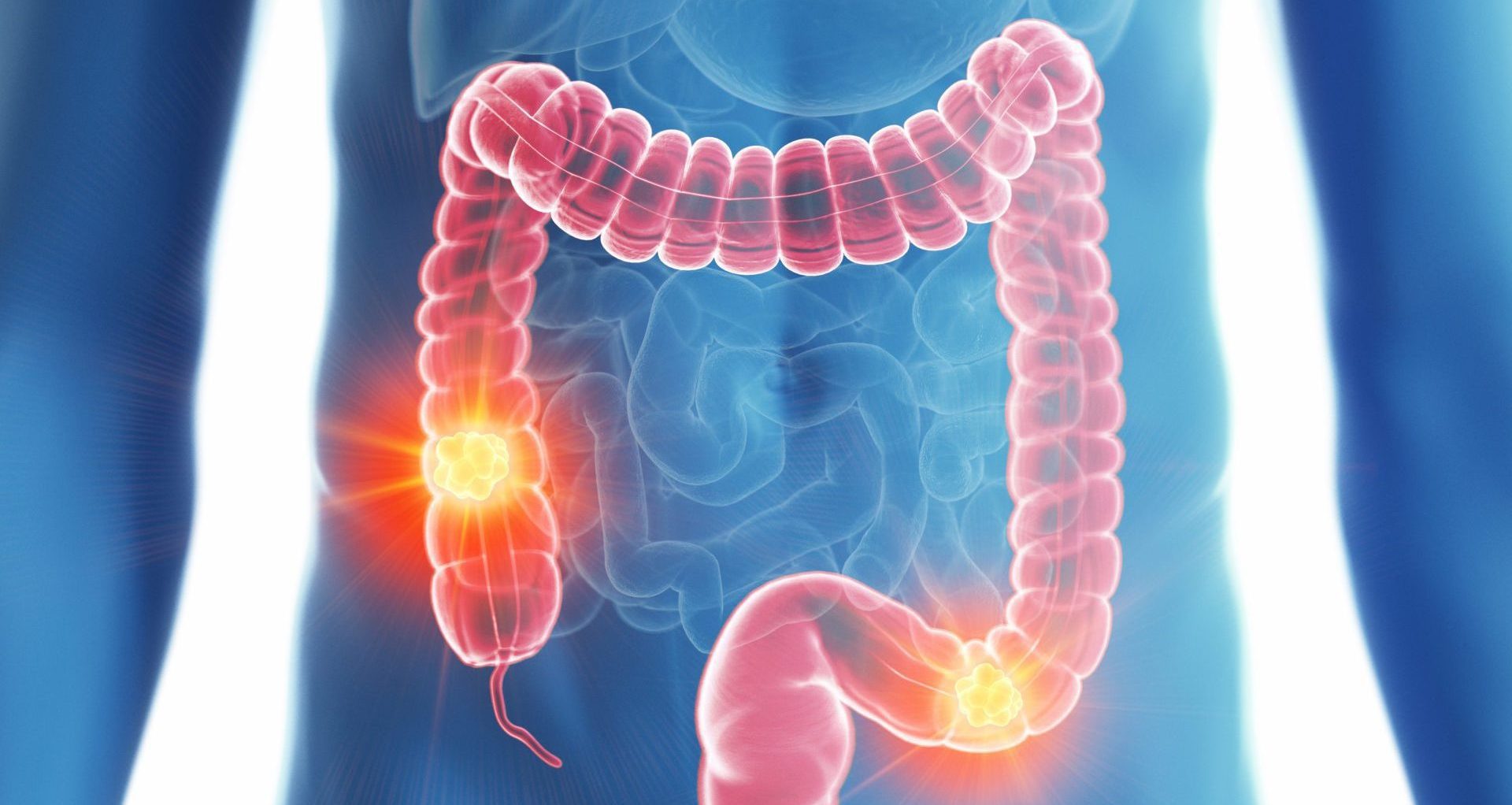
Prevention Strategies: Reducing Your Risk of Rectal Cancer
While not all cases of rectal cancer can be prevented, there are several steps individuals can take to reduce their risk:
Lifestyle Modifications
- Adopt a Healthy Diet: Increase consumption of fruits, vegetables, and whole grains. Limit intake of red and processed meats.
- Exercise Regularly: Aim for at least 150 minutes of moderate-intensity exercise or 75 minutes of vigorous-intensity exercise per week.
- Maintain a Healthy Weight: Obesity is a risk factor for many cancers, including rectal cancer.
- Limit Alcohol Consumption: If you drink alcohol, do so in moderation.
- Quit Smoking: If you smoke, seek support to quit. If you don’t smoke, don’t start.
Regular Screening
Adhering to recommended screening guidelines is crucial for early detection and prevention of rectal cancer. The American Cancer Society recommends that people at average risk of colorectal cancer start regular screening at age 45. Those with higher risk factors may need to begin screening earlier or undergo more frequent tests.

Managing Other Health Conditions
Properly managing conditions like inflammatory bowel disease and type 2 diabetes can help reduce the risk of developing rectal cancer.
Treatment Options for Rectal Cancer
The treatment of rectal cancer typically involves a multidisciplinary approach, combining various therapies based on the stage and location of the cancer. Common treatment modalities include:
Surgery
Surgery is often the primary treatment for rectal cancer. The type of surgery depends on the cancer’s stage and location:
- Local Excision: For early-stage cancers, the tumor and some surrounding healthy tissue may be removed through the anus.
- Low Anterior Resection: The cancerous portion of the rectum is removed, and the colon is attached to the remaining part of the rectum.
- Abdominoperineal Resection: In cases where the cancer is close to the anus, both the rectum and anus may need to be removed, necessitating a permanent colostomy.
Radiation Therapy
Radiation therapy uses high-energy beams to destroy cancer cells. It may be used:

- Before surgery (neoadjuvant therapy) to shrink tumors
- After surgery (adjuvant therapy) to kill any remaining cancer cells
- To relieve symptoms in advanced cases
Chemotherapy
Chemotherapy involves the use of drugs to kill cancer cells throughout the body. It may be used:
- In combination with radiation therapy before surgery
- After surgery to kill any remaining cancer cells
- As the primary treatment for advanced rectal cancer
Targeted Therapy
These drugs target specific abnormalities within cancer cells. They may be used alongside chemotherapy for advanced rectal cancer.
Immunotherapy
This relatively new approach helps the body’s immune system recognize and fight cancer cells. It’s typically used for advanced rectal cancers with specific genetic features.
Living with Rectal Cancer: Coping and Support
A diagnosis of rectal cancer can be overwhelming, affecting not just physical health but also emotional and psychological well-being. Coping with the disease involves various aspects:

Emotional Support
It’s normal to experience a range of emotions following a cancer diagnosis. Seeking support through the following avenues can be helpful:
- Professional counseling or therapy
- Support groups for cancer patients
- Open communication with friends and family
Practical Considerations
Living with rectal cancer often involves practical challenges. Consider the following:
- Learn about your condition and treatment options to make informed decisions
- Discuss potential side effects of treatment with your healthcare team and how to manage them
- Plan for potential lifestyle changes, especially if surgery is required
- Explore financial resources and insurance options to manage treatment costs
Maintaining Quality of Life
Despite the challenges, many people with rectal cancer can maintain a good quality of life:
- Stay physically active as much as possible, following your doctor’s recommendations
- Maintain a healthy diet to support your body during treatment
- Practice stress-reduction techniques such as meditation or yoga
- Continue engaging in activities you enjoy, modifying them as necessary
Research and Future Directions in Rectal Cancer
The field of rectal cancer research is dynamic, with ongoing studies aimed at improving prevention, detection, and treatment strategies. Some areas of current research include:

Improved Screening Methods
Researchers are working on developing more accurate and less invasive screening methods for colorectal cancer. These include:
- Blood-based tests that can detect cancer-specific DNA markers
- Advanced imaging techniques for more precise detection of small tumors
Personalized Medicine
The concept of personalized medicine is gaining traction in cancer treatment. This approach involves:
- Genetic profiling of tumors to guide treatment decisions
- Development of targeted therapies based on specific genetic mutations
Immunotherapy Advancements
While immunotherapy has shown promise in treating some cases of rectal cancer, researchers are working to:
- Improve the effectiveness of existing immunotherapy drugs
- Develop new immunotherapy approaches
- Identify biomarkers to predict which patients will respond best to immunotherapy
Minimally Invasive Surgical Techniques
Ongoing research is focused on refining surgical techniques to minimize invasiveness and improve outcomes. This includes:

- Robotic-assisted surgery for more precise tumor removal
- Transanal minimally invasive surgery (TAMIS) for early-stage rectal cancers
Combination Therapies
Researchers are exploring various combinations of existing treatments to improve efficacy and reduce side effects. This includes:
- Novel combinations of chemotherapy drugs
- Integration of targeted therapies with standard treatment protocols
As research progresses, the hope is that these advancements will lead to improved outcomes and quality of life for individuals affected by rectal cancer.
Causes, Symptoms, Treatment, and More
Rectal cancer is cancer that develops in cells in the rectum, which is below the sigmoid colon and above the anus.
Your rectum and colon are both part of the digestive system, so rectal and colon cancers are often grouped under the term colorectal cancer.
In the United States, colorectal cancer is the third most common type of cancer. It’s also the second deadliest, making early detection and treatment critical. Worldwide, colorectal cancer is the second most common cancer in females and the third most common cancer in males, according to a 2020 data from Worldwide Cancer Research Fund.
The American Cancer Society estimates there will be 44,850 new cases of rectal cancer in the United States in 2022. This compares with 106,180 new cases of colon cancer.
At first, rectal cancer may be asymptomatic.
As the cancer progresses, rectal bleeding is the most common symptom. Changes in your bowel habits may occur, lasting for more than a few days. You may also experience unexplained weakness and fatigue.
You may also experience unexplained weakness and fatigue.
According to the Centers for Disease Control and Prevention (CDC), common symptoms of colorectal cancer may include:
- rectal bleeding
- changes in how often you have bowel movements
- feeling that your bowel isn’t emptying completely
- pain when you have a bowel movement
- diarrhea or constipation
- blood or mucus in your stool
- unintentional weight loss and appetite changes
- unexplained fatigue
- frequent abdominal discomfort, gas, cramps, pain
Another possible sign of rectal cancer is iron-deficiency anemia, which may occur as a result of blood loss.
While the exact cause of rectal cancer is unknown, malignant tumors develop when cancerous cells grow out of control and multiply. These cells can penetrate and destroy healthy tissue. What sets off this process isn’t always clear.
There are some inherited gene mutations that can increase your risk for rectal cancer. One of these is hereditary nonpolyposis colorectal cancer (HNPCC), also known as Lynch syndrome. This disorder significantly raises the risk of colon and other cancers. In some cases, your doctor may recommend removing your colon as a preventive measure.
One of these is hereditary nonpolyposis colorectal cancer (HNPCC), also known as Lynch syndrome. This disorder significantly raises the risk of colon and other cancers. In some cases, your doctor may recommend removing your colon as a preventive measure.
Another genetic condition that may cause rectal cancer is familial adenomatous polyposis (FAP). This is a rare disorder that can cause polyps to grow in the lining of the colon and rectum.
While these polyps start off as noncancerous, they may become malignant. In fact, most people with FAP develop cancer before the age of 50. Large bowel removal may also be a preventive surgery your doctor may recommend.
Like other types of cancers, rectal cancer can spread when cancerous cells grow in healthy tissue and travel to other areas of the body.
At first, rectal cancer may affect the tissues lining the rectum. In some cases, it affects the entire rectum. The cancer may then spread to nearby lymph nodes or organs, with the liver being commonly affected. Other possible areas of metastasis can include the:
Other possible areas of metastasis can include the:
- abdomen
- brain
- lungs
- ovaries
While there’s no single known cause of rectal cancer, a number of known factors may increase your risk for developing this cancer at some point. These include the following:
- Age. Diagnosis usually occurs after age 50, although rates are increasing among younger people.
- Race. Black Americans are at higher risk than other groups of developing rectal cancer. One reason for this may be inequities in healthcare access.
- Family history. Personal or family history of colorectal cancer can raise risk.
- Genetics. Lynch syndrome or FAP are two genetic conditions that may increase your risk.
- Radiation therapy. Previous radiation treatment to the abdomen can increase risk.
Other conditions that may increase risk include:
- ovarian cancer
- polyps
- inflammatory bowel disease, especially if you’ve lived with it for 8 years or longer
- obesity
- type 2 diabetes that’s not well managed
Some lifestyle factors that may play a role in colorectal cancer are:
- eating a diet low in vegetables and fiber
- eatinga diet high in red and processed meat
- a lack of exercise
- smoking
- consuming three or more alcoholic drinks per day
Rectal cancer is diagnosed with a combination of the following:
Physical exam and screening tests
The doctor will likely begin by taking your medical history and performing a physical exam. This may include inserting a gloved finger into your rectum to feel for lumps.
This may include inserting a gloved finger into your rectum to feel for lumps.
The doctor might next recommend a fecal immunochemical test (FIT) or a sigmoidoscopy. The screening schedule for these tests will vary depending on your risk level. If these tests are positive for cancer, a colonoscopy is the next step.
Colonoscopy
In a colonoscopy, a doctor uses a thin tube with a light and camera at the end to view the inside of your rectum and colon. They can usually remove any polyps they find at this time.
During the colonoscopy, the doctor can also collect tissue samples for later examination in a lab. These samples can be viewed under a microscope to determine if they’re cancerous. They can also be tested for genetic mutations associated with colorectal cancer.
Blood tests
The doctor may also order a blood test. A high level of carcinoembryonic antigen (CEA), a substance made by cancerous tumors, in your bloodstream may indicate rectal cancer.
Imaging tests
Once the doctor makes their diagnosis of rectal cancer, their next step is to determine how far it might have spread.
The doctor may use an endorectal ultrasound to examine your rectum and surrounding area. For this test, a doctor inserts a probe into your rectum to produce a sonogram, a type of image.
The doctor may use other imaging tests to look for signs of cancer throughout your body. These include:
- CT or PET scan, which may help the doctor see the extent of cancer in the rectum, colon, and other organs
- MRI, which can help the doctor determine the stage of the cancer
No matter where it starts, cancer can spread, or metastasize, through tissue, the lymphatic system, or the bloodstream to reach other parts of the body.
Staging cancer indicates how far the cancer has progressed, which can help doctors decide the best treatment.
Below are the stages of rectal cancer.
Stage 0 (carcinoma in situ)
Only the innermost layer of the rectum wall contains abnormal cells.
Stage 1
Cancer cells have spread past the innermost layer of the rectum wall but not to lymph nodes.
Stage 2
Cancer cells have spread into or through the outer muscle layer of the rectum wall but not to lymph nodes. This is often referred to as stage 2A. In stage 2B, the cancer has spread into the abdominal lining.
Stage 3
Cancer cells have spread through the outermost muscle layer of the rectum and to one or more lymph nodes. Stage 3 is often broken up into substages 3A, 3B, and 3C based on the amount of lymph node tissue affected.
Stage 4
Cancer cells have spread to distant sites, like the liver or lungs.
In recommending treatment, the doctor and care team will consider:
- tumor size
- where cancer may have spread
- your age
- your general health
This can help them determine the best combination of treatments, as well as the timing of each treatment.
Below are the general guidelines for treatment by stage. This list contains potential treatment options. Not all patients may require the treatment options listed for each stage.
Stage 0
- removal of suspicious tissue during colonoscopy
- removal of tissue during a separate surgery
- removal of tissue and part of the surrounding area
Stage 1
- local excision or resection
- radiation therapy for some patients
- chemotherapy for some patients
Stages 2 and 3
- surgery
- radiation therapy
- chemotherapy
Stage 4
- surgery, possibly in more than one area of the body
- radiation therapy
- chemotherapy
- targeted therapies, such as monoclonal antibodies or angiogenesis inhibitors
- cryosurgery, a procedure that uses a cold liquid or a cryoprobe to destroy abnormal tissue
- radiofrequency ablation, a procedure in which radio waves are used to destroy abnormal cells
- a stent to keep the rectum open if it’s blocked by a tumor
- palliative therapy to improve overall quality of life
You can also ask your doctor about clinical trials that might be a good fit. Many current therapies for cancer began as clinical trials. These trials may try different combinations of current treatment, treatments that have been approved by the U.S. Food and Drug Administration (FDA) for other conditions, or new treatments.
Many current therapies for cancer began as clinical trials. These trials may try different combinations of current treatment, treatments that have been approved by the U.S. Food and Drug Administration (FDA) for other conditions, or new treatments.
In some cases, therapy as part of a clinical trial may be covered by insurance or covered by a sponsor of the trial.
Clinical trials can help advance scientists’ understanding of cancer and investigate new treatment options. Participating may offer additional options for your treatment. You can learn more about clinical trials for rectal cancer at the National Cancer Institute.
Rectal cancer may spread outside of the rectum, eventually affecting surrounding tissues, lymph nodes, and organs.
You may also be at risk of developing second cancers, which occur after treatment of the initial cancer. Rectal cancer may especially increase the risk of secondary cancers affecting the:
- anus
- colon
- kidneys
- lungs
- small intestine
- vagina
A diagnosis of colorectal cancer in the early stages, before it spreads, can improve your chances of survival.
According to the CDC and the American Cancer Society, the best way to reduce your overall risk for developing colorectal cancer is to begin regular screenings beginning at age 45. Depending on family history, genetics, and other risk factors, your doctor may recommend screenings sooner than this.
Colon and rectal cancer can be diagnosed early when discovered through routine screenings, such as a routine colonoscopy or stool test. Highly sensitive stool tests can detect the presence of cancer. If abnormal cells are discovered, a timely colonoscopy should also be performed.
You may also be able to help prevent rectal cancer by adopting a healthy lifestyle and eliminating related risk factors such as inactivity, smoking, and eating red or processed meats.
Advances in treatment over the last few decades have improved the overall outlook for people with rectal cancer. In fact, many cases of rectal cancer can be treated successfully.
It’s also important to consider the 5-year survival rate, which is determined based on the average number of people who are alive after 5 years or being diagnosed with a certain type of cancer and its stage.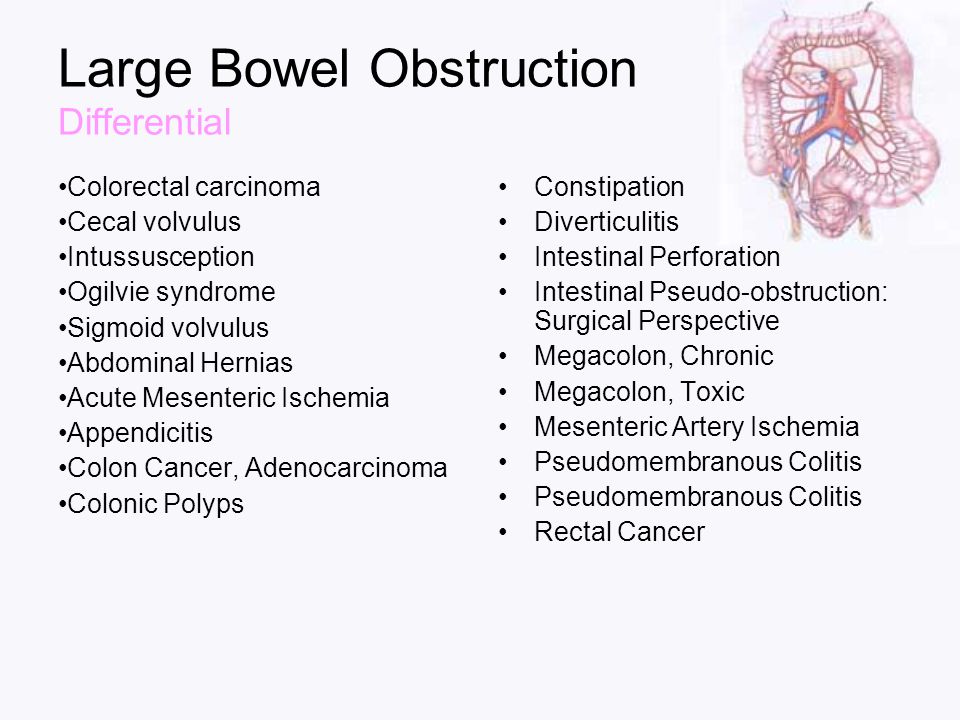 The overall 5-year survival rate for rectal cancer is 67 percent for all stages combined.
The overall 5-year survival rate for rectal cancer is 67 percent for all stages combined.
The 5-year relative survival rate by stage is:
- Localized: 89 percent
- Regional: 72 percent
- Distant: 16 percent
It’s important to note that these figures are based on information between 2010 and 2016. Since then, treatments may have been modified and improved. These numbers may not reflect current survival rates.
For people with rectal cancer, your outlook can depend on other factors that can include:
- where cancer may have spread
- whether your bowel is blocked
- if the entire tumor can be surgically removed
- age and general health
- whether this is a recurrence
- how well you tolerate treatment
When it comes to your individual outlook, the best source of information is your own doctor.
Rectal cancer, commonly referred to as colorectal cancer, is common in both the United States and worldwide. The symptoms of rectal cancer may not appear until the later stages, which makes early, regular screenings an important factor in both detection and treatment.
The symptoms of rectal cancer may not appear until the later stages, which makes early, regular screenings an important factor in both detection and treatment.
Treatment and screening options may continue to evolve, but it’s also important to reduce your own risk if you can. Talk with your doctor about any personal concerns you have about rectal cancer risks, and whether you’re experiencing any unusual bowel-related symptoms.
Anal cancer | NHS inform
Anal cancer is a rare type of cancer that affects the very end of the large bowel.
Symptoms of anal cancer
The symptoms of anal cancer are often similar to more common and less serious conditions affecting the anus, such as piles (haemorrhoids) and anal fissures (small tears or sores).
Symptoms of anal cancer can include:
- bleeding from the bottom (rectal bleeding)
- itching and pain around the anus
- small lumps around the anus
- a discharge of mucus from the anus
- loss of bowel control (bowel incontinence)
However, some people with anal cancer don’t have any symptoms.
Speak to your GP if you develop any of the above symptoms. While they’re unlikely to be caused by anal cancer, it’s best to get them checked out.
Diagnosing anal cancer
Your GP will usually ask about your symptoms and carry out some examinations.
They may feel your tummy and carry out a rectal examination. This involves your doctor inserting a gloved finger into your bottom so they can feel any abnormalities. Your GP will refer you to hospital if they think further tests are necessary.
The National Institute for Health and Care Excellence (NICE) recommends in its 2015 guidelines that GPs should consider referring someone with an unexplained anal lump or anal ulcer. The person should receive an appointment within 2 weeks.
If you’re referred to hospital, a number of different tests may be carried out to check for anal cancer and rule out other conditions.
Some of the tests you may have include a:
- sigmoidoscopy – where a thin, flexible tube with a small camera and light is inserted into your bottom to check for any abnormalities
- proctoscopy – where the inside of your rectum is examined using a hollow tube-like instrument (proctoscope) with a light on the end
- biopsy – where a small tissue sample is removed from your anus during a sigmoidoscopy or proctoscopy so it can be examined in a laboratory under a microscope
If these tests suggest you have anal cancer, you may have some scans to check whether the cancer has spread. Once these are complete, your doctors will be able to ‘stage’ the cancer. This means giving it a score to describe how large it is and how far it has spread.
Once these are complete, your doctors will be able to ‘stage’ the cancer. This means giving it a score to describe how large it is and how far it has spread.
You can read more about the stages of anal cancer on the Cancer Research UK website.
How anal cancer is treated
If you’re diagnosed with anal cancer, you’ll be cared for by a multidisciplinary team. This is a team of different specialists who work together to provide the best treatment and care.
The main treatments used for anal cancer are:
- chemoradiation – a combination of chemotherapy and radiotherapy
- surgery – to remove a tumour or a larger section of bowel
In cases where the cancer has spread and can’t be cured, chemotherapy alone may be considered to help relieve symptoms. This is known as palliative care.
Chemoradiation
Chemoradiation is a treatment that combines chemotherapy (cancer-killing medication) and radiotherapy (where radiation is used to kill cancer cells). It’s currently the most effective treatment for anal cancer. You don’t usually need to stay in hospital when you’re having chemoradiation.
It’s currently the most effective treatment for anal cancer. You don’t usually need to stay in hospital when you’re having chemoradiation.
Chemotherapy for anal cancer is usually given in 2 cycles, each lasting 4 to 5 days, with a 4-week gap between the cycles. In many cases, part of the chemotherapy is delivered through a small tube called a peripherally inserted central catheter (PICC) in your arm, which can stay in place until your treatment has finished.
The tube means you don’t need to stay in hospital during each of the cycles of chemotherapy. However, you’ll be attached to a small plastic pump, which you take home with you.
A few hospitals now offer tablet chemotherapy for anal cancer, which avoids the need for the pump and PICC.
Read more about how chemotherapy is carried out
Radiotherapy is usually given in short sessions, once a day from Monday to Friday, with a break at weekends. This is usually carried out for 5 to 6 weeks. To prepare for radiotherapy, additional scans will be required.
Read more about how radiotherapy is carried out
Both chemotherapy and radiotherapy often cause significant side effects, including:
- tiredness
- sore skin around the anus
- sore skin around the penis and scrotum in men or vulva in women
- hair loss – limited hair loss from the head, but total loss from the pubic area
- feeling sick
- diarrhoea
These side effects are usually temporary, but there’s also a risk of longer-term problems, such as infertility. If you’re concerned about the potential side effects of treatment, you should discuss this with your care team before treatment begins.
Other possible long-term side effects can include:
- bowel control problems
- long-term (chronic) diarrhoea
- erectile dysfunction
- vaginal pain when having sex
- dry and itchy skin around the groin and anus
- bleeding from the anus, rectum, vagina or bladder
Tell your doctor if you develop any of these symptoms so they can be investigated and treated.
Surgery
Surgery is a less common treatment option for anal cancer. It’s usually only considered if the tumour is small and can be easily removed, or if chemoradiation hasn’t worked.
If the tumour is very small and clearly defined, it may be cut out during a procedure called a local excision. This is a relatively simple procedure, carried out under general anaesthetic, that usually only requires a stay in hospital of a few days.
If chemoradiation has been unsuccessful or the cancer has returned after treatment, a more complex operation called an abdominoperineal resection may be recommended. As with a local excision, this operation is carried out under general anaesthetic.
An abdominoperineal resection involves removing your anus, rectum, part of the colon, some surrounding muscle tissue, and sometimes some of the surrounding lymph nodes (small glands that form part of the immune system) to reduce the risk of the cancer returning. You’ll usually need to stay in hospital for up to 10 days after this type of surgery.
During the operation, a permanent colostomy will also be formed to allow you to pass stools. This is where a section of the large intestine is diverted through an opening made in the abdomen called a stoma. The stoma is attached to a special pouch that will collect your stools after the operation.
Before and after the operation, you’ll see a specialist nurse who can offer support and advice to help you adapt to life with a colostomy. Adjusting to life with a colostomy can be challenging, but most people become accustomed to it over time.
Read more about living with a colostomy
Follow-up
After your course of treatment ends, you’ll need to have regular follow-up appointments to monitor your recovery and check for any signs of the cancer returning.
To start with, these appointments will be every few weeks or months, but they’ll gradually become less frequent over time.
What causes anal cancer?
The exact cause of anal cancer is unknown, although a number of factors can increase your risk of developing the condition. These include:
These include:
- infection with human papilloma virus (HPV) – a common and usually harmless group of viruses spread through sexual contact, which can affect the moist membranes lining your body
- having anal sex or lots of sexual partners – possibly because this increases your risk of developing HPV
- having a history of cervical, vaginal or vulval cancer
- smoking
- having a weakened immune system – for example, if you have HIV
Your risk of developing anal cancer increases as you get older, with half of all cases diagnosed in people aged 65 or over. The condition is also slightly more common in women than men.
Further information about anal cancer
- Cancer Research UK: anal cancer
- Macmillan: anal cancer
Colorectal cancer – prevalence, symptoms, screening and diagnosis
Anvar Yuldashev tells –
What is colorectal cancer
“Colorectal cancer” is a collective term for cancer (tumor) of various parts of the colon (colon) and rectum (rectum). Among many oncological diseases, this pathology remains the least covered and most covered with myths and fears of patients, but, nevertheless, modern possibilities for early diagnosis give reason to consider CRC at ~ 95% preventable cancer.
Among many oncological diseases, this pathology remains the least covered and most covered with myths and fears of patients, but, nevertheless, modern possibilities for early diagnosis give reason to consider CRC at ~ 95% preventable cancer.
The prevalence of colorectal cancer
The statistics of the developed countries of the world show a steady increase in newly diagnosed cases of colon and rectal cancer compared with malignant tumors of any other localization, except for lung cancer. In the world as a whole, the incidence is not the same: the highest incidence rates are in Australia and New Zealand, Europe and North America, and the lowest in Africa and Central and South Asia. Such geographic differences seem to be determined by the degree of influence of risk factors for CRC – diet, bad habits, environmental factors against the background of a genetically determined susceptibility to the development of this type of cancer.
In Russia, colorectal cancer occupies one of the leading positions.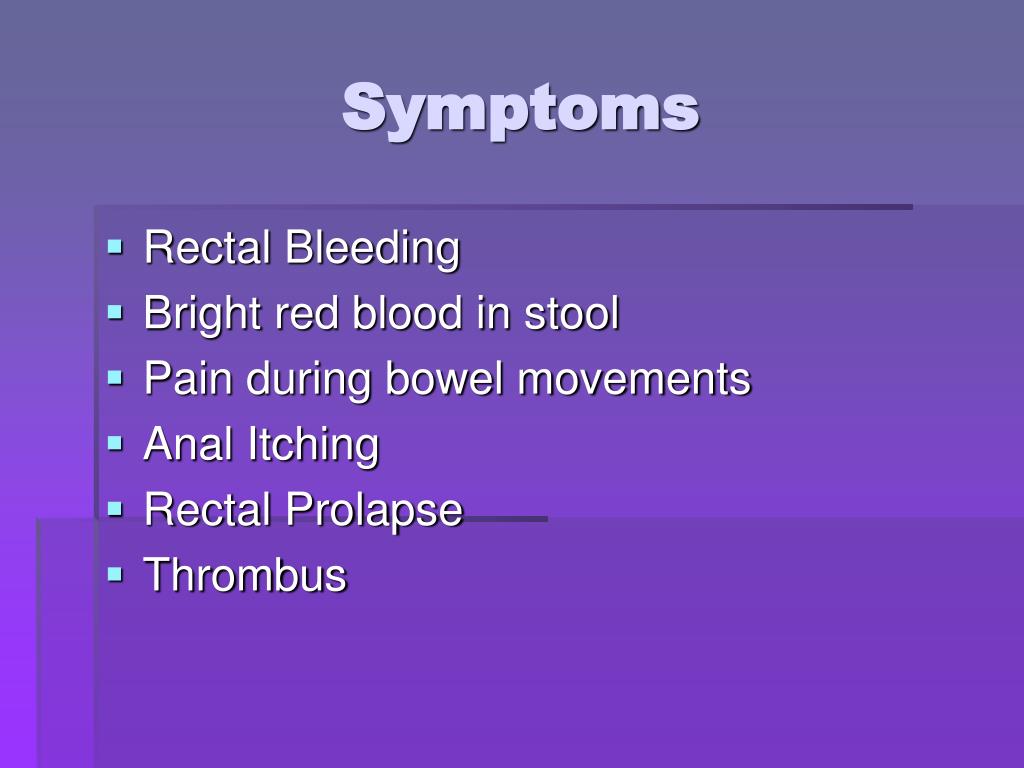 Among men who fell ill with malignant neoplasms, CRC is in 3rd place after lung and stomach cancer, and in women, respectively, after breast cancer and skin cancer. An alarming fact is the high level of mortality in the 1st year of life after diagnosis, due to the fact that more than 70% of patients with colon cancer and more than 60% of patients already have advanced forms of cancer (Stage III-IV) when they first visit a doctor. with rectal cancer, with about 40% of patients undergoing surgical treatment.
Among men who fell ill with malignant neoplasms, CRC is in 3rd place after lung and stomach cancer, and in women, respectively, after breast cancer and skin cancer. An alarming fact is the high level of mortality in the 1st year of life after diagnosis, due to the fact that more than 70% of patients with colon cancer and more than 60% of patients already have advanced forms of cancer (Stage III-IV) when they first visit a doctor. with rectal cancer, with about 40% of patients undergoing surgical treatment.
Approximately 140,000 new cases and approximately 50,000 deaths from CRC are reported in the United States each year. Surprisingly, it is in the United States that there is a slow but steady downward trend in the incidence of CRC, and survival rates for CRC are among the highest in the world. Reporting data from the US National Cancer Institute show that 61% of patients with this diagnosis have overcome the five-year survival rate.
In the US and many other Western countries, improved outcomes have been achieved, in particular, by the timely detection and removal of colonic polyps, early detection of CRC, and more effective treatment. Unfortunately, in many countries with limited resources and a different health infrastructure, especially in Central and South America and Eastern Europe, the death rate from CRC continues to rise.
Unfortunately, in many countries with limited resources and a different health infrastructure, especially in Central and South America and Eastern Europe, the death rate from CRC continues to rise.
Risk factors for colorectal cancer
Colorectal cancer most often develops as degeneration of adenomatous (glandular) polyps.
Although hereditary predisposition significantly increases the risk of developing CRC, most cases are sporadic (in other words, unpredictable, episodic) and not familial: approximately 80-95% of cases are sporadic versus 5-20% with a hereditary cause. But among all other human cancers, CRC shows the greatest association with familial incidence. Studies of the molecular mechanisms of colorectal cancer development have identified a number of genetic disorders, most of which are inherited in an autosomal dominant manner and significantly increase the risk of developing cancer. Familial adenomatous polyposis and Lynch syndrome (hereditary non-polyposis colorectal cancer) are the most common familial cancers with known genetic defects, together accounting for only about 5% of colorectal cancers.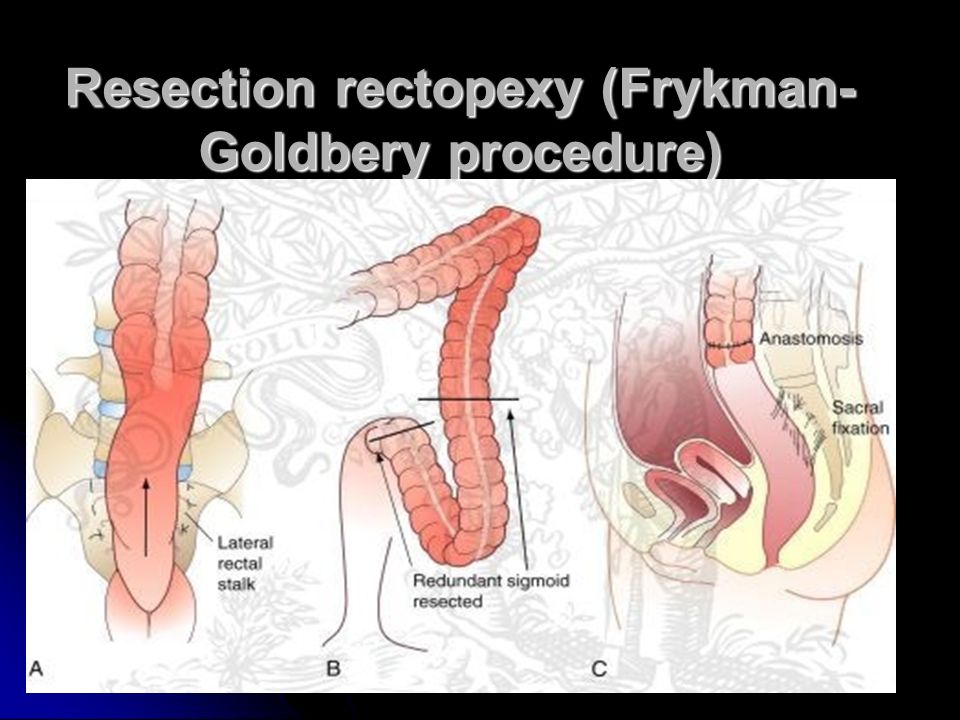
Other well-known predisposing factors include inflammatory bowel disease (ulcerative colitis, Crohn’s disease) – the risk of cancer increases with the duration of these diseases. The overall incidence of colorectal cancer begins to increase approximately 8-10 years after the onset of inflammatory bowel disease and rises to 15-20% after 30 years. The main risk factors are the duration of the disease, the prevalence of the lesion, young age and the presence of complications.
Age is a significant risk factor: colorectal cancer is uncommon before age 40, but the frequency of colorectal cancer increases in each subsequent decade and reaches a maximum at 60-75 years.
There are factors that increase the risk of colorectal cancer. It has been established that populations of people in which the incidence of colorectal cancer is high eat food that is poor in fiber, but at the same time high in animal protein, fat and refined carbohydrates. Obesity increases the risk of developing colorectal cancer by about 1.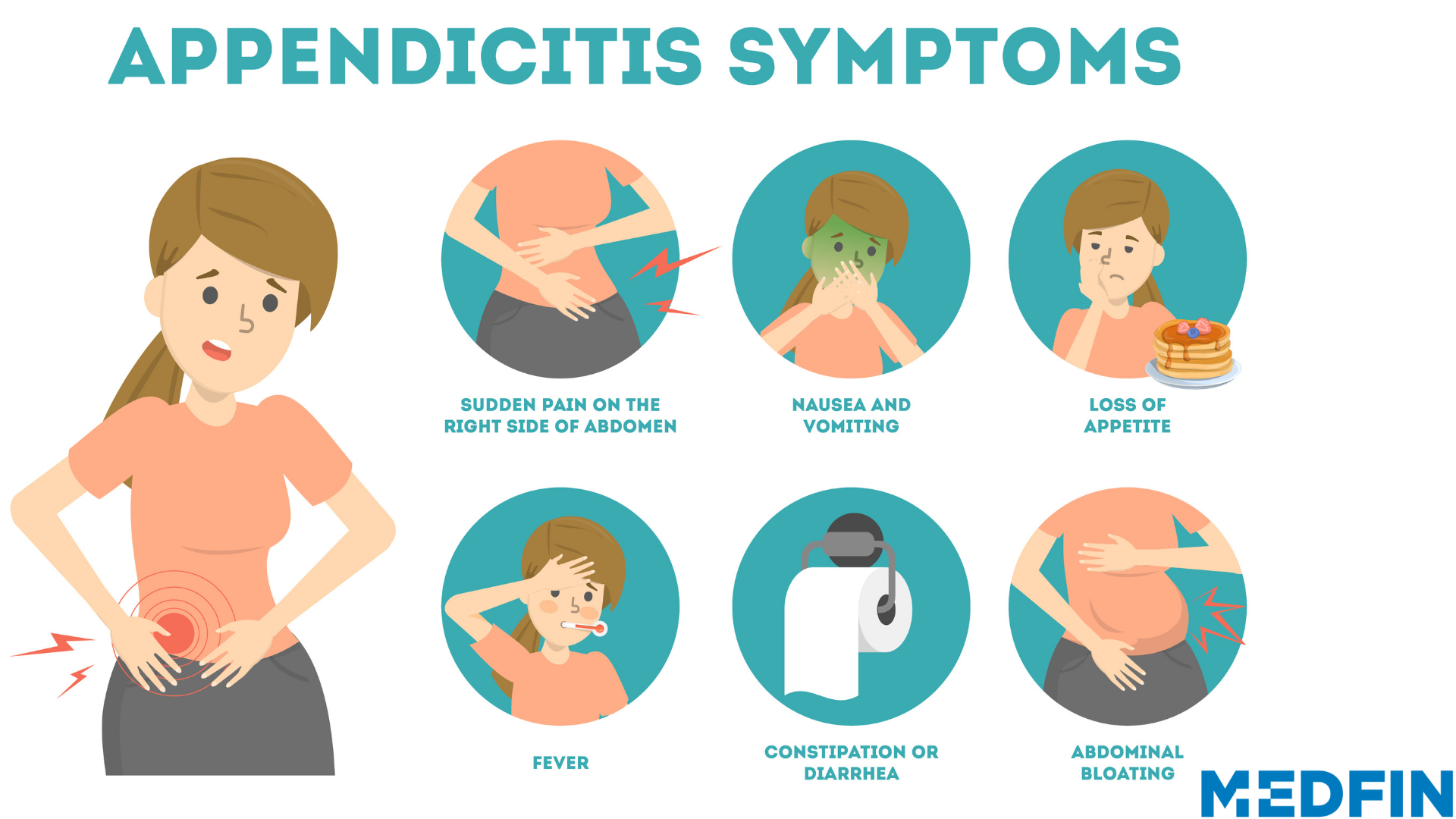 5 times, and more so in men. Excessive alcohol consumption and smoking are also among the factors that increase the sporadic incidence of colon polyposis and colorectal cancer, and significantly increase the risk of cancer in patients with hereditary colon diseases (eg, Lynch syndrome).
5 times, and more so in men. Excessive alcohol consumption and smoking are also among the factors that increase the sporadic incidence of colon polyposis and colorectal cancer, and significantly increase the risk of cancer in patients with hereditary colon diseases (eg, Lynch syndrome).
What is colorectal cancer screening?
These are methods to actively identify individuals with risk factors for CRC or asymptomatic CRC, based on the use of special diagnostic methods. Screening for colorectal cancer can significantly reduce the chances of developing it by detecting precancerous bowel disease or cancer at an early stage and providing timely treatment.
Screening is primarily for individuals with first-line relatives (children, parents, siblings) who have cases of colon or rectal cancer, adenomas, and inflammatory bowel disease. The presence of such a diagnosis in a relative increases the risk by about 2 times compared with the general population.
Recommendations from several colorectal cancer communities (American College of Gastroenterology, Multisociety Task Force on Colorectal Cancer from the American Cancer Society, American College of Radiology) provide guidance on the timing of the first colonoscopy for the following patients:
early, up to 40 years, in patients with close relatives with intestinal adenoma diagnosed before the age of 60;
10-15 years earlier than the “youngest” CRC in the family was diagnosed and/or this diagnosis was made at 60 years of age or younger.

The timing of screening tests may be changed if the patient has additional risk factors for CRC: radiation exposure of the abdomen at an early age for cancer, a diagnosis of acromegaly (which may develop adenomatosis of the colon), a previous kidney transplant (as a reason for long-term immunosuppressive therapy) .
Symptoms of colorectal cancer
Tumors of the colon and rectum grow slowly and take a long time before the first signs can appear. Symptoms depend on the location of the tumor, the type, extent of spread, and complications. A feature of colorectal cancer is that it “makes itself known” quite late. In other words, such a tumor is not visible and imperceptible to the patient; only when it grows to a significant size and grows into neighboring organs and / or gives metastases, the patient begins to feel discomfort, pain, note blood and mucus in the stool.
The right part of the large intestine has a large diameter, a thin wall and its contents are liquid, so blockage of the intestinal lumen (obturation) develops last. More often, patients are concerned about gastrointestinal discomfort due to disorders of the functions of neighboring organs – the stomach, gallbladder, liver, pancreas. Bleeding from the tumor is usually occult, and fatigue and morning sickness due to anemia may be the only complaints. Tumors sometimes become large enough to be felt through the abdominal wall before other signs appear.
More often, patients are concerned about gastrointestinal discomfort due to disorders of the functions of neighboring organs – the stomach, gallbladder, liver, pancreas. Bleeding from the tumor is usually occult, and fatigue and morning sickness due to anemia may be the only complaints. Tumors sometimes become large enough to be felt through the abdominal wall before other signs appear.
The left part of the colon has a smaller lumen, the feces in it are semi-solid, and the tumor tends to narrow the lumen in a circle, causing intestinal obstruction. Stagnation of intestinal contents activates the processes of decay and fermentation, which is accompanied by bloating, rumbling in the abdomen. Constipation gives way to copious, loose, offensive stools. The patient is concerned about colicky pains in the abdomen. The stool can be mixed with blood: bleeding in colon cancer is most often associated with the disintegration or ulceration of the tumor. Some patients have symptoms of bowel perforation with the development of peritonitis.
In rectal cancer, the main symptom is bleeding during defecation. Whenever bleeding or bleeding from the anus is observed, even in the presence of severe hemorrhoids or diverticular disease, concomitant cancer should be ruled out. There may be an urge to defecate and a feeling of incomplete emptying of the bowels. The pain appears when the tissues surrounding the rectum are involved.
In some cases, even before the onset of intestinal symptoms, patients may show signs of metastatic disease – the spread of the tumor to other organs, for example, an enlarged liver, ascites (accumulation of fluid in the abdominal cavity), and an increase in supraclavicular lymph nodes.
Violation of the general condition of patients can be observed in the early stages and is manifested by signs of anemia without visible bleeding, general malaise, weakness, and sometimes fever. These symptoms are characteristic of many diseases, but their appearance should be the reason for an immediate visit to a general practitioner.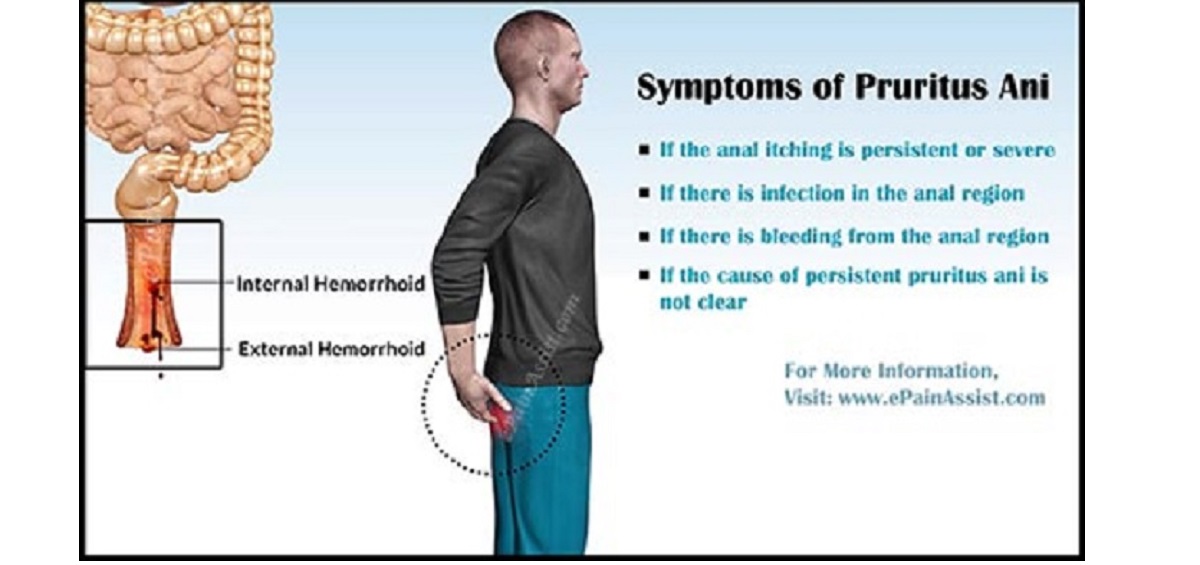
There are many “masks” for colorectal cancer, so you should consult a doctor:
with increased fatigue, shortness of breath, pallor uncharacteristic for the patient, if they were not there before;
for prolonged constipation or diarrhoea;
for frequent/persistent abdominal pain;
if there is visible blood in the stool after a bowel movement;
in the presence of occult blood in the analysis of feces.
In case of acute pain in the abdomen, with bloating or asymmetry of the abdomen, in the absence of stool and gas, you should call an ambulance or urgently seek medical help.
Screening and diagnosis of CRC
In the presence of the complaints described above, as well as in patients belonging to a high risk group for CRC, an examination is carried out. The most informative and generally accepted method of early diagnosis is colonoscopy – an endoscopic (intraluminal) examination of the mucous membrane of the rectum, large intestine and part of the small intestine (for about 2 m). All pathologically altered tissues and polyps will either be completely removed during colonoscopy, or pieces will be taken from them and sent for histological examination. If the mass is sessile or cannot be safely removed with a colonoscopy, the doctor will consider surgery.
All pathologically altered tissues and polyps will either be completely removed during colonoscopy, or pieces will be taken from them and sent for histological examination. If the mass is sessile or cannot be safely removed with a colonoscopy, the doctor will consider surgery.
Once cancer is diagnosed, patients should have a CT scan of the abdomen and chest to check for metastatic lesions, as well as laboratory tests to assess the severity of anemia.
In 70% of patients with colorectal cancer, there is an increase in the level of serum cancer-embryonic antigen (CEA) and tumor marker CA19.9. In the future, monitoring of CEA and CA19.9 may be useful for early diagnosis of tumor recurrence. Other markers of colorectal cancer are also studied according to indications.
Colonoscopy is the primary screening test for patients over 50 years of age at moderate risk. In the presence of polyps or other pathology in the colon and rectum, the regularity of studies can increase to annual or every 3-10 years.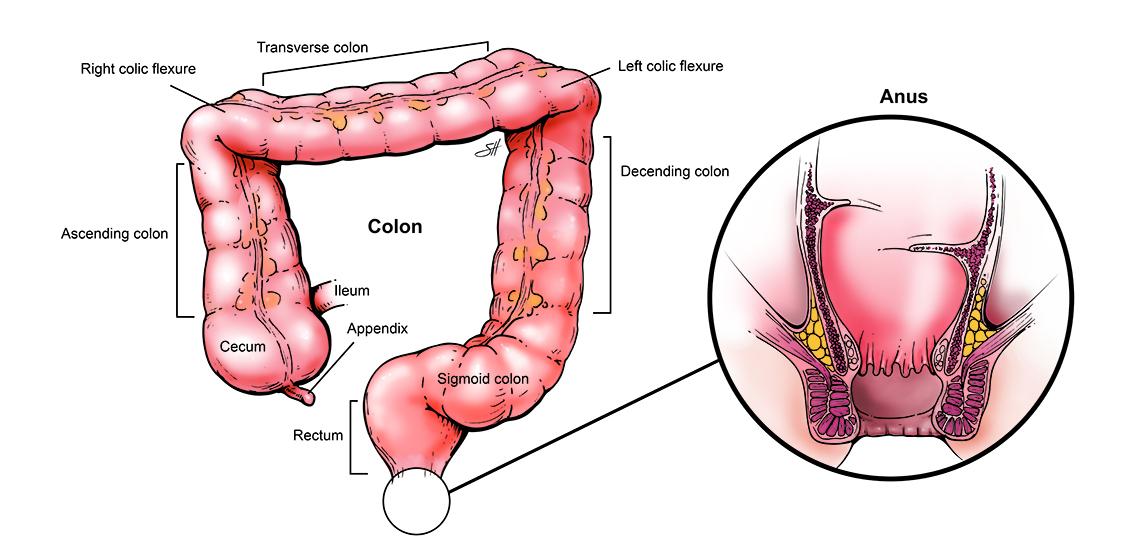 Assessing the degree of risk of developing colorectal cancer in patients with bowel diseases, the doctor decides on the frequency of examinations individually for each patient.
Assessing the degree of risk of developing colorectal cancer in patients with bowel diseases, the doctor decides on the frequency of examinations individually for each patient.
Only such an active position of doctors regarding the early diagnosis of polyps and the prevention of tumors of the colon and rectum has led to a slowdown in the growth rate of colorectal cancer in the United States.
Treatment of colorectal cancer
Surgery for colorectal cancer can be performed in 70-95% of patients without evidence of metastatic disease. Surgical treatment consists in removing a segment of the intestine with a tumor with a local lymphatic apparatus, followed by connecting the ends of the intestine (creating an anastomosis) to preserve the natural ability to empty the intestine. In case of rectal cancer, the volume of the operation depends on how far from the anus the tumor is located. If it is necessary to completely remove the rectum, a permanent colostomy is formed (a surgically created opening in the anterior abdominal wall to remove the intestine), through which the contents of the intestine will be emptied into the pouch. Given the modern advances in medicine and devices for the care of a colostomy, the negative consequences of this operation are minimized.
Given the modern advances in medicine and devices for the care of a colostomy, the negative consequences of this operation are minimized.
If liver metastases are present in non-malnourished patients, removal of a limited number of metastases is recommended as a further surgical option. This operation is performed if the primary tumor has been completely removed, the liver metastasis is in one lobe of the liver, and there are no extrahepatic metastases. Survival after surgery for 5 years is 6-25%.
IMPORTANT!!!
The effectiveness of colorectal cancer treatment depends on the stage of the disease at which the patient consulted a doctor. Only early diagnosis of colorectal cancer makes it possible to make the most of the entire range of modern treatment methods and achieve satisfactory results.
Attentive attitude to your body and timely seeking qualified medical assistance increases the chances of continuing an active life even with such a serious oncological disease.
Colorectal cancer: symptoms, diagnosis – laboratory article DNAOM
Views:
37374
Published:
/
Updated:
- Oncology
What is colorectal cancer?
Colon and rectal cancer is cancer that starts in the colon or rectum. Colon and rectal cancers are often grouped together because they share many common features. Colorectal cancer is a tumor that originates from the epithelial cells of the large intestine.
Colorectal cancer ranks third among malignant neoplasms after lung and skin cancer in Russia.
How does colorectal cancer start?
Polyps in the colon or rectum.
Most cases of colorectal cancer are associated with the formation of polyps, outgrowths of the mucous membrane of the colon or rectum. Some types of polyps can transform into malignant tumors over time, but not all./rectal-cancer-symptoms-513946-FINAL-e383b3971a4746c590e8d1f359be7d45.png) The process of malignancy depends on the type, size, localization and type of polyp.
The process of malignancy depends on the type, size, localization and type of polyp.
There are 3 main types of polyps:
1) Adenomatous polyps or adenomas. In 9% of cases, they turn into cancer, so their formation is identical to precancerous conditions.
2) Villous polyps. The probability of malignancy is 50%.
3) Hyperplastic polyps and inflammatory polyps. These polyps are more common, but in general, are not precancerous.
Factors that increase the risk of colorectal cancer
• Detection of a polyp larger than 1 cm.
• Detection of more than 2 polyps.
• Dysplastic processes in the mucous membrane of the colon at the site of removal of the polyp. Dysplasia implies the presence of cells with atypia. The cells are not cancerous, but are able to transform into them with the development of carcinoma in situ and invasive cancer.
Other risk factors for disease:
• Features of nutrition.![]() The prevalence of animal fats and protein, easily digestible carbohydrates and a low proportion of fiber in the diet are a risk factor for colorectal cancer. It is believed that the above food components change the metabolism and composition of bile acids, as well as the qualitative and quantitative composition of the intestinal microflora, thereby increasing the risk of disease.
The prevalence of animal fats and protein, easily digestible carbohydrates and a low proportion of fiber in the diet are a risk factor for colorectal cancer. It is believed that the above food components change the metabolism and composition of bile acids, as well as the qualitative and quantitative composition of the intestinal microflora, thereby increasing the risk of disease.
• Obesity and overweight.
• Alcohol.
• Age. The likelihood of colorectal cancer increases with age and peaks in the age group of 70 years and older.
• Low physical activity.
• Genetic factors. Some congenital diseases, such as adenomatous polyposis, Gardner’s syndrome, Turcot’s syndrome, hereditary non-polyposis colon cancer, increase the likelihood of developing colorectal cancer in the future.
Colorectal cancer risk groups
Those at high risk for colorectal cancer include those with ulcerative colitis, Crohn’s disease, celiac disease, and other chronic inflammatory bowel diseases./what-is-a-rectopexy-4582499_final-268bc0a4ed1940fe98c4cf9ce5e9e6d7-d30f2a0f0a964a839ef6767ba7576678.png) Additionally, at risk are people cured of cancer of the colon, ovary, uterine body and mammary glands and treated for intestinal polyposis. Patients with close relatives suffering from colon and rectal cancer deserve special attention.
Additionally, at risk are people cured of cancer of the colon, ovary, uterine body and mammary glands and treated for intestinal polyposis. Patients with close relatives suffering from colon and rectal cancer deserve special attention.
Cancer classification
Most often, a cancerous tumor is localized in those departments where intestinal contents are retained – in the sigmoid and caecum.
Depending on the type of tumor, there are exophytic and endophytic (infiltrative) forms of the tumor. Exophytic tumors grow into the lumen of the large intestine in the form of a polyp or nodule. Infiltrative tumors affect the entire thickness of the intestinal wall, covering it along the entire perimeter and narrowing the lumen.
Malignant cells of tumor tissue can penetrate into local blood or lymphatic vessels, spread to regional lymph nodes and further to the rest of the body.
The stage of colorectal cancer depends on how deeply the tumor has affected the organ and spread beyond it.
Familial cases
The risk of developing colorectal cancer is higher in people with a family history of the disease. Cancer in first-degree relatives such as parents and siblings is a big concern, but cancer in distant relatives is also important. The presence of two or more relatives with colorectal cancer in the family is more significant than the presence of only one relative. The age at which the cancer was diagnosed must also be taken into account: if the cancer was discovered at a younger age, for example, before 60 years of age, then screening activities should begin 10–15 years before this age.
Individuals with a family history of the disease are advised to undergo genetic counseling. A geneticist, based on a family history, can calculate individual risks of developing the disease and recommend, if necessary, genetic testing. Based on genetic testing, preventive measures can be suggested to help reduce the risk of colorectal cancer.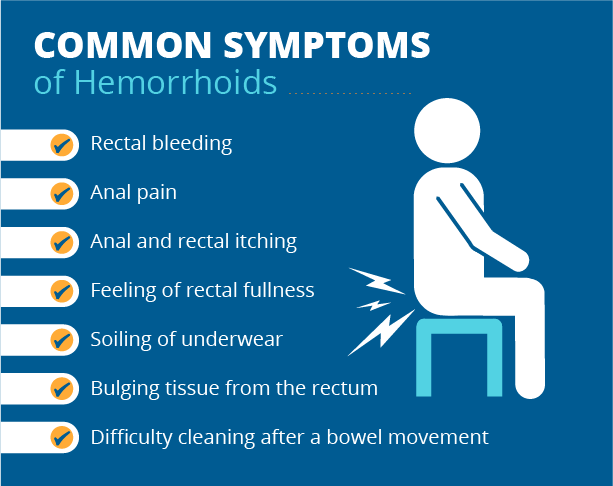 For example, participating in screening more than once a year, changing diet, etc.
For example, participating in screening more than once a year, changing diet, etc.
Clinical manifestations and symptoms of the disease
The most common symptoms are pain, impaired motor-evacuation function (discomfort, feeling of heaviness, vomiting, loss of appetite), the presence of pathological discharge with feces. In most cases, the tumor remains unrecognized for a long time, and only if it goes beyond the organ or reaches a large size, a person can complain and consult a doctor.
When the colon is affected, it matters which section is affected. There is a difference in the cancer clinics of the right and left colon.
With right-sided localization of the tumor, the pain syndrome is observed 2-3 times more often than with the left-sided one. Tumor growth is accompanied by paroxysmal pain, predominantly on the right, intestinal disorders, fever, fatigue and weakness. Quite often, patients note gastrointestinal discomfort, indicating functional disorders of neighboring sections of the gastrointestinal tract.
Left-sided lesion of the colon is more often associated with the clinic of intestinal obstruction, therefore, the presence of the disease may indicate the alternation of constipation and liquid fetid stools, bloating. The pain is colicky in nature.
Colon cancer is accompanied by bleeding during bowel movements. A frequent symptom is “intestinal discomfort” – a feeling of incomplete emptying and the presence of a foreign body in the rectum, as well as constipation, which occurs in 40% of cases.
In the presence of metastases, ascites, an increase in the size of the liver and lymph nodes are observed.
Colorectal cancer diagnostics
Diagnosis of colorectal cancer is complex and includes examination, endoscopic, morphological, and ultrasound methods.
The first diagnostic method is an external examination, which is carried out using digital rectal examination (DRE) of the anus and rectum. Up to 70% of tumors can be diagnosed using PRI.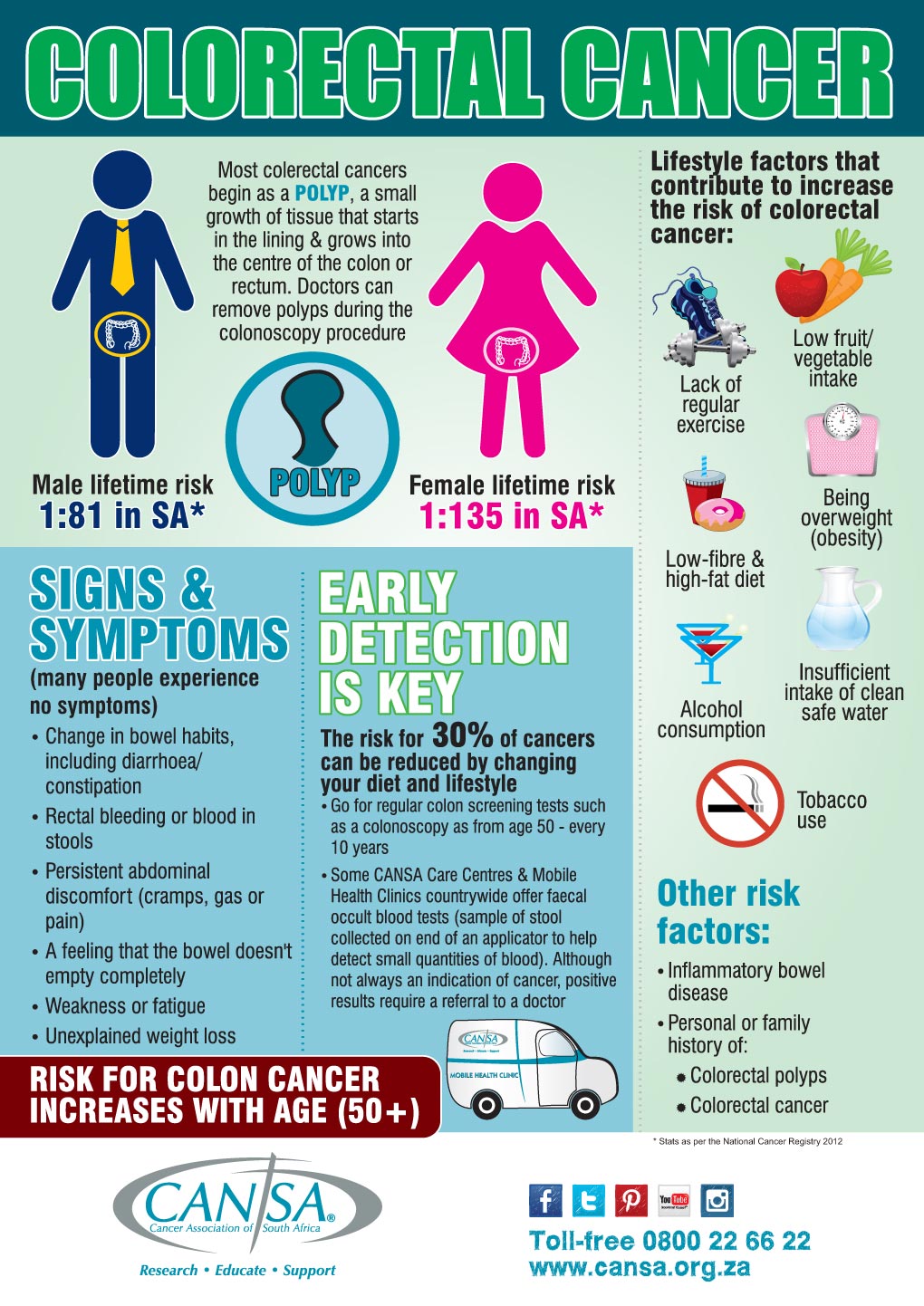 If there are indications, examination and palpation of the inguinal lymph nodes, palpation of the abdomen and liver are performed.
If there are indications, examination and palpation of the inguinal lymph nodes, palpation of the abdomen and liver are performed.
Sigmoidoscopy – allows you to examine the rectum and distal sigmoid colon (for 30 cm). During the procedure, it is possible to take a piece of material for a biopsy.
Irrigoscopy – X-ray examination of the colon. With the help of barium enema with double contrasting, the doctor determines the extent of the tumor, determines the form of growth, the presence of fistulas and ulcerations. It is carried out in various projections, reveals formations up to 0.5 cm in diameter.
Colonoscopy – endoscopic examination of the rectum, colon, part of the small intestine (over 2 m). The colonoscopy method is convenient in that it allows you to examine the entire mucosa and take a tissue biopsy for histological examination in suspicious cases.
Ultrasound method – allows you to assess the prevalence of the tumor process.

